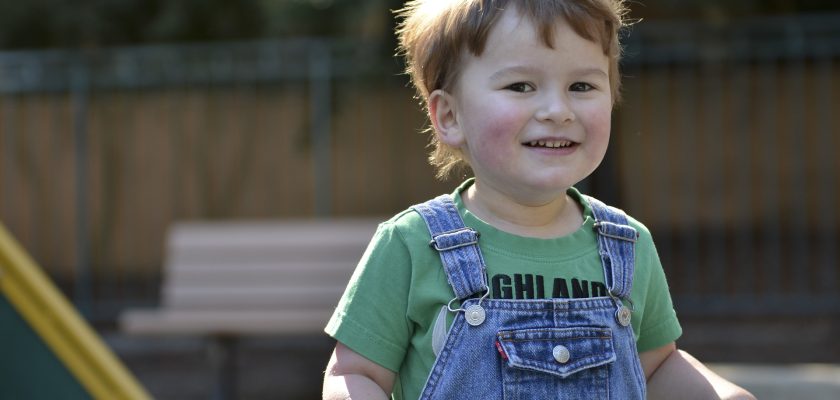The Science Facts about Autism and Vaccines
- Updated on: May 7, 2025
- Published on Sep 2, 2022

What is Autism Spectrum Disorder
Autism spectrum disorder (ASD) is a developmental disability caused by differences in the brain. Patients with ASD may have a recognized difference, such as a genetic condition. Other possible causes are unknown. Scientists believe that multiple causes of ASD interact to change how people develop in the most common ways. There is still a lot we don’t know about these causes and how they affect people with autism spectrum disorder. People with ASD may behave, communicate, interact, and learn in ways that most people do not. Often, nothing about their appearance sets them apart from others. ASD patients have a wide range of abilities. Some ASD patients have advanced conversation skills, while others are nonverbal. Some people with ASD require a lot of assistance in their daily lives, while others can work and live with little to no assistance.
ASD appears before the age of three and can last for the rest of a person’s life, though symptoms may improve over time. Some children exhibit ASD symptoms within the first year of life. In others, symptoms may not appear until the child is 24 months old or later. Some children with ASD learn new skills and meet developmental milestones until they are 18 to 24 months old, at which point they stop learning new skills or lose those they already have.
As children with ASD grow into adolescents and young adults, they may struggle to form and maintain friendships, communicate with peers and adults, and understand what behaviors are expected at school or on the job. They may be brought to the attention of healthcare providers if they also have conditions like anxiety, depression, or attention deficit/hyperactivity disorder, which are more common in people with ASD than in people without ASD.
Autism Spectrum Disorder Signs and Symptoms
ASD (autism spectrum disorder) is a developmental disability caused by brain differences. Patients with ASD frequently struggle with social interaction and communication, as well as restricted or repetitive behaviors or interests. ASD patients may also learn, move, or pay attention in unusual ways. It is important to note that some of these symptoms can be seen in people who do not have ASD. However, for people with ASD, these characteristics can make life extremely difficult.
People With ASD May Struggle With Social Communication and Interaction Skills
ASD-related social communication and social interaction characteristics include the following:
- Avoids or does not maintain eye contact
- By 9 months of age, kids does not respond to their name
- By 9 months of age, does not exhibit facial expressions such as happiness, sadness, anger, or surprise
- Does not play simple interactive games such as pat-a-cake by the age of 12 months
- By 12 months of age, he or she uses few or no gestures (for example, does not wave goodbye)
- By 15 months of age, does not share interests with others (for example, shows you an object that they like)
- By the age of 18 months, does not point in showing you something interesting.
- By the age of 24 months, does not notice when others are hurt or upset.
- By 36 months of age, he has not noticed other children and has not joined them in play.
- By 48 months of age, the child has stopped pretending to be someone else, such as a teacher or a superhero.
- Does not sing, dance, or act for you by the age of 60 months
Behaviors or Interests That Are Restricted or Repetitive
People with ASD may exhibit unusual behaviors or interests. These behaviors or interests distinguish ASD from conditions defined solely by difficulties with social communication and interaction. ASD-related restricted or repetitive behaviors and interests can include:
- Lines up toys or other objects and becomes agitated when the order is altered
- Repeats words or phrases repeatedly (called echolalia)
- Plays with toys in the same manner each time
- Is concentrated on object parts (for example, wheels)
- Minor changes irritates them
- Has obsessive hobbies
- Certain routines must be followed
- flapping hands, rocking body, or spinning in circles
- Have strange reactions to how things sound, smell, taste, look, or feel
Additional Features
Most people with ASD have additional characteristics. These could include
- Language skills lag
- Movement skills that are delayed
- Cognitive or learning skills that are delayed
- Behavior that is hyperactive, impulsive, and/or inattentive
- Seizure disorder or epilepsy
- Unusual sleeping and eating habits
- gastrointestinal problems (for example, constipation)
- Unusual emotional or mood swings
- Anxiety, stress, or excessive worry Absence or increased fear
It should be noted that children with ASD may not exhibit all or any of the behaviors listed here as examples.
Autism and Vaccination Link Debunked
Vaccinations are an essential part of keeping your child safe and healthy. As a parent, you provide shelter, safety, and proper nutrition for your child. Diphtheria, measles, mumps, rubella, polio, tetanus, influenza, COVID-19, and whooping cough are just a few of the diseases that childhood vaccines protect children against (pertussis). If these diseases appear rare — or even unheard of — it’s usually because the vaccines are working.
If you fail to get your child immunized, he or she will be exposed to potentially dangerous, even fatal, diseases. Some parents may be concerned about the risks and benefits of childhood vaccines. Others have heard false claims that vaccines cause autism. Vaccines do not cause autism, according to research. More than a dozen studies have attempted to establish a link. Each of them has come up short.
Controversy Over MMR Vaccine
The debate began in 1998, when British researchers published a paper claiming that the MMR vaccine caused autism. The paper itself was later labeled “fraud” by England’s General Medical Counsel, but it sparked a heated debate about the vaccine’s safety that continues to this day. The study only included 12 children, but it received a lot of attention because there was a rapid increase in the number of children diagnosed with the condition at the same time.
The findings of the paper prompted other doctors to conduct their own investigation into the link between the MMR vaccine and autism. A total of 12 follow-up studies were conducted. There was no evidence that the vaccine caused autism. Dr. Andrew Wakefield’s medical license was revoked in 2010 after the General Medical Counsel declared that the paper was not only based on bad science, but also on deliberate fraud and falsifications. Investigators discovered that a lawyer seeking to establish a link between the vaccine and autism had paid Wakefield over £435,000.
What About All Vaccinations Taken Together?
Researchers have also investigated whether all of the vaccines required before the age of two caused autism. In the first 15 months of life, children receive 25 shots. Some people worried that getting all those shots at such a young age would lead to autism, but there is no evidence that this is the case. However, the CDC compared groups of children who received vaccines on the recommended schedule to those who received them late or not at all. The autism rate did not differ between the two groups.
The Institute of Medicine’s Immunization Safety Review Committee issued a report on the subject in 2004. The group examined all published and unpublished studies on vaccines and autism. It issued a 200-page report concluding that there was no evidence linking vaccines to autism.
Controversy Over Thimerosal
Concerns about a possible vaccine-autism link shifted from MMR to a substance used in some children’s vaccines a year after the British study. It was known as thimerosal and contained mercury. At high concentrations, this metal is toxic to the brain and kidneys. Thimerosal was used by doctors to prevent the growth of bacteria and fungi in vaccines. There was no proof that the small amount used in the medicines was harmful. Nonetheless, it was removed from most children’s vaccines by 2001, at the request of the American Academy of Pediatrics and the United States Public Health Service.
Researchers studied children who had received thimerosal-containing vaccines to see if it was linked to autism. They compared them to children who did not receive vaccines. The CDC conducted or funded nine separate studies on thimerosal and autism. It discovered no link. Furthermore, autism diagnoses increased after vaccine manufacturers removed thimerosal from almost all childhood vaccines. (Today, trace amounts of it remain in diphtheria, tetanus, and pertussis vaccines known as DTaP and DTaP-Hib.)
Most scientific and medical experts agree that there is no link between vaccines and autism or other neurodevelopmental disorders. Nonetheless, critics continue to raise concerns about the situation. They not only call into question the link between MMR and thimerosal and autism, but they also name additional suspects who they believe may play a role in autism development. Researchers continue to investigate these issues, but there is no evidence that these factors play a role in the development of autism. Most autism researchers believe there are numerous causes, which may include genetic and environmental factors but do not include vaccines.
Nonetheless, research into the issue is ongoing. In 2019, the largest study to date examined nearly 660,000 children over the course of 11 years and discovered no link between the vaccine and autism.


